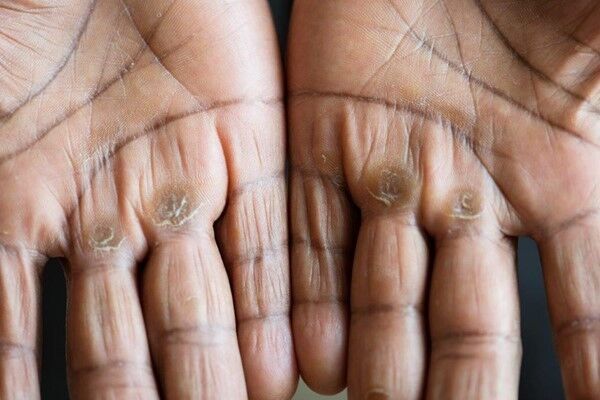The best tips and tricks for preventing and treating corns and calluses
Submitted by: Olivia Jones communications Save to Instapaper
The discomfort caused by corns and calluses impacts everyday activities, as even the simple act of walking can be painful. For chronic corn sufferers, it might seem like the cycle will never be broken, but there are some easy ways to prevent and treat corns.
“Although not a serious medical condition, corns can be extremely uncomfortable,” explained Lynsey Hammond, MD for Kroko, manufacturers of leading South African footcare products. “Our corn treatment has been on the market for almost 90 years and is our flagship product. While this treatment is effective there are also a number of ways people can avoid developing corns in the first place.”
How to prevent corns
Corns generally have a small patch of thickened, dead skin that has a central core. They tend to occur at pressure points on the bottom of the feet and sides of the toes where the foot comes in contact with a shoe and friction is caused. Consider a few of these tips to reduce the risk of getting corns in the long run.
Tip 1: Wear the right shoes
Wearing ill-fitting shoes can cause corns to develop on the toes, particularly if the shoes you are wearing have a narrow toe box or are pointed. If there is any pinching or rubbing when walking, then the shoes should be ditched.
Tip 2: Get the size right
It’s not just about trying on shoes, you really need to measure your feet before trying on new shoes. There should be a half-inch between the longest toe and the front of the shoe. It’s also best to shop at the end of the day when feet are most swollen. When buying running shoes, buy a size bigger.
Tip 3: Replace shoes regularly
When shoes are worn regularly, the soles will wear down which means reduced protection from the shock of walking on hard surfaces. Worn linings on shoes can also chafe the skin, causing corns, calluses or blisters so replace shoes when needed.
Tip 4: Wear socks
Socks provide a protective layer between your feet and your shoes, and good quality socks will prevent friction that leads to corns. If you’re wearing shoes that don’t suit socks, consider wearing no-show or ‘secret’ socks as this will help reduce friction. If you’re an athlete, then ensure you invest in quality socks that will provide the necessary cushioning.
Tip 5: Check your posture
People who walk with improper posture, walking too heavily on the inner or outer edge of the foot, can experience corns. Check your posture and if necessary, see a chiropractor to align your body and gait.
How do you treat corns?
While these tips might work for most, corns can still occur, particularly for those who compete in long-distance running. If a corn does form, they’re best treated with one of Kroko’s tried-and-tested products.
- Kroko Corn and Callus Remover: This tried and trusted remedy has been helping remove corns since 1936. This is a quick and painless cream ointment application for the removal of corns and calluses.
- Kroko CornFix: This a liquid corn removal treatment with an applicator and 6 corn plasters with foam doughnut-shaped rings. CornFix is painted onto the corn and it works by eating away hard, calloused skin and improves the renewal process for smoother, softer feet over time.
- Kroko Medicated Corn Plasters: These are soft foam rings filled with a dose of salicylic acid in an adhesive corn plaster for the symptomatic treatment of corns, warts and inter-digital corns and calluses.
- Kroko Corn Protectors: These are doughnut-shaped foam ring protective corn plasters which help reduce the pressure on painful corns and calluses when wearing shoes or socks
For more information, visit www.kroko.co.za or email info@kroko.co.za. Keep updated on all Kroko news by following Krokofootcare on Facebook or kroko_footcare on Instagram.
Latest Press Articles
- The Bateleurs Continue to Support Wildlife Conservation with Latest Cheetah Relocation
- Join the unified global call to save the ocean by supporting MPA Day this August
- Top paddlers set to compete on World Ocean Day in Leatherback Rum Aliwal Shoal Surfski Challenge
- Don’t Miss These Epic Sardine Run Events Taking Place on the KZN South Coast!
- Final Spots Left! Join 25 Run for Rangers Competitors Making a Difference for Conservation
- Beloved Twins launch Winter Wellness Challenge to help South Africans boost immunity
- Book this unbeatable buffet lunch at Fish Eagle Café this Father’s Day!
- 10 Township Swimmers Get the Chance to Compete in this Year’s Ocean’s 8 Charity Swim
- 7 Reasons to Book the Next School Outing at Crocworld Conservation Centre
- The Do’s and Don’ts of Winter Hand Care - Expert Tips for Long-Term Skin Health
- New spa adds to the wellness trend embraced at Serenity Hills on the KZN South Coast
- The Packshed Restaurant Announces Unmissable Great Winter Events
- South Coast Tourism & Investment Enterprise shares 4 ways to grow tourism investment on KZN South Coast
- Laager dietitian explains how to avoid the hidden sugars in popular snacks and drinks
- Save the date for the 2025 Ocean Festival in Scottburgh!
The Pulse Updates
- Xlink Crowned Technology Company Of The Year At The Africa Tech Week Awards 2025 (June 5, 2025)
- Celebrate International Day Of Play With The Weirdest (and Most Wonderful) Toys Of 2025 (June 4, 2025)
- Switching On The Future - Landmark Electricity Expo Comes To Joburg (June 3, 2025)
- Timeless, Bold, And Distilled With Care - Just Like Dad (June 2, 2025)
- New Report Reveals Msme Funding Realities In South Africa – And What Must Change (May 30, 2025)
